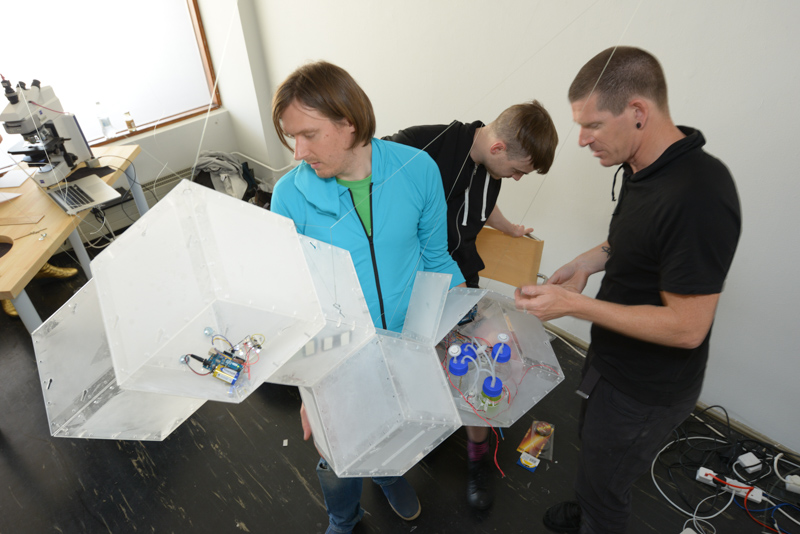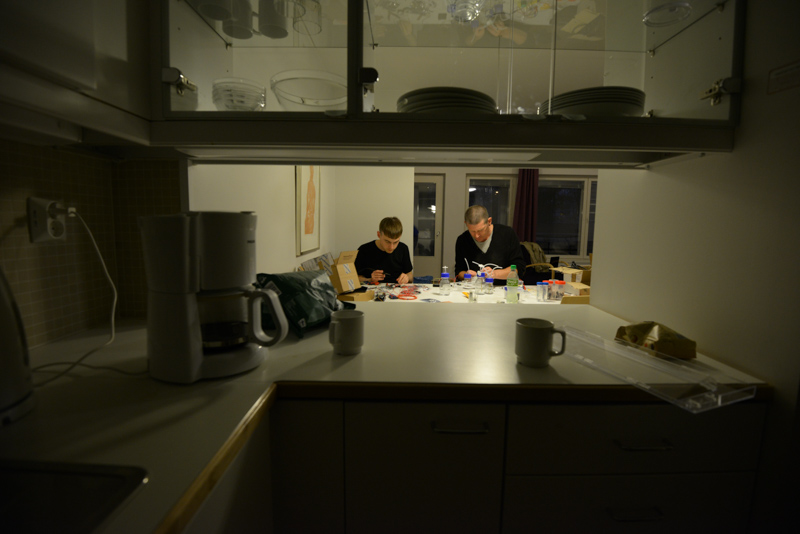by Stephen Fortune, Andy Gracie, Markus Schmidt, Georg Tremmel
Presented during MAKING_Life in Helsinki.

Cyanobacteria (S.elongatus PCC 7942), continuous culture device, acrylic, electronics
Star Beasts subjects cyanobacteria (‘blue-green algae’) to artificial evolutionary pressures in order to modify their circadian rhythms to the day lengths of exoplanets in foreign solar systems. Each payload of a theoretically space-destined probe houses a continuous culture device, designed to travel into space before separating, and continuing towards their individual destinations. Humanity’s exoplanet detection instruments (Kepler Satellite) represent the upper limit of the light we can detect and analyse in the Universe, and though it can identify planets by this light it cannot determine the day length of faraway planets. As such each modular payload begins its artificial evolution cycle when its sensors can detect the rotation period of its destination.
Cyanobacteria are a model organism for circadian rhythm research, and were fundamental in providing a breathable atmosphere on the early Earth in a catastrophe known as The Great Oxygenation Event. Circadian rhythms are shared by all organisms on planet Earth, syncing bodily processes to the 24 hour daily cycle. Circadian rhythms are here selected as a cipher for the many other metabolic parameters which might require modulation in order for cyanobacteria to thrive on distant exoplanets.
Inside the continuous culture device the microorganisms are kept in a constant state of growth, change and eventual adaptation to their future environment. While the device does not directly modify the algae genome, it changes the environmental conditions (such as day length) that force the algae to genetically adapt. In this gallery instance, the periods of light and dark have been accelerated to synchronise with terrestrial human attention spans.
Making Life Exhibition: Gallery Opening from Biofaction on Vimeo.




